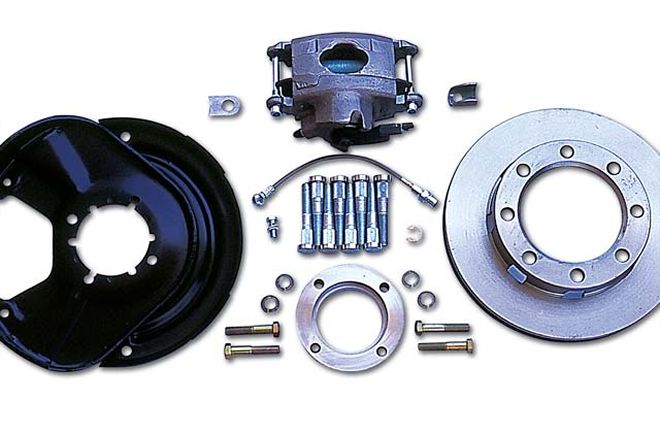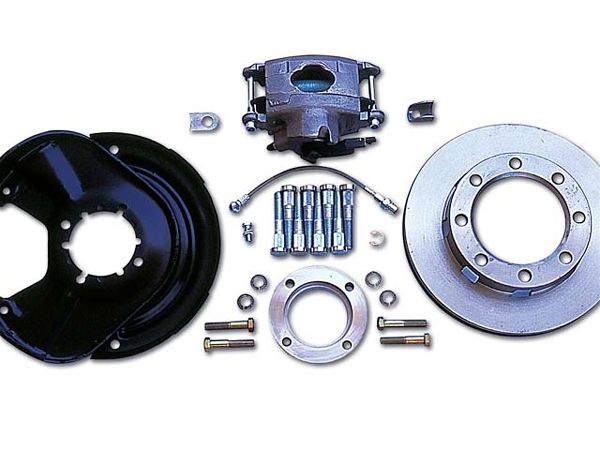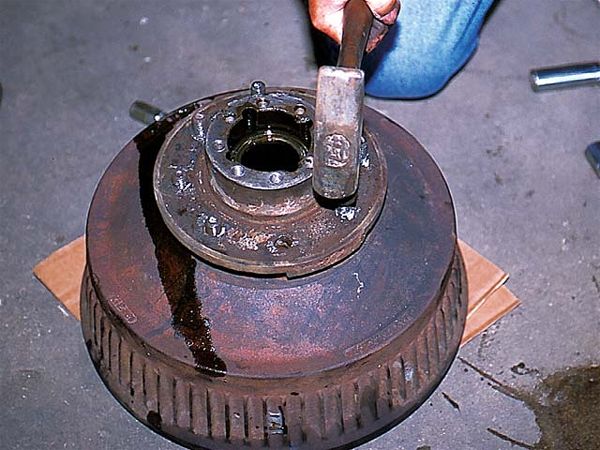

The advantages disc brakes offer over drums have been known for a while--heat dissipation and fade resistance, water-shedding ability, and so on. Discs have been standard on front axles much longer than on truck rear axles, and the new trucks that come with them cost lots of money.
If you own an older 4x4 and want to upgrade, you have essentially three choices: One, you can find an axle already equipped with discs and swap the entire thing, once you find the correct gear ratio and width, and perhaps rebuild it. Two, you can fabricate from scratch your own disc-brake system. And three, for those whose talents or time don't include fabrication, you can get a disc-brake conversion kit such as this one from Dynatrac.
This kit fits the 3/4-ton heavy-duty 14-bolt rearend found in many single-rear-wheel GM pickups and 2500-series Suburbans. Some other applications are available. It includes a mechanically operated parking brake to meet legal requirements, but the addition of a Mico-Lock or other line-lock device is beneficial. The wear parts in the kit are all standard parts for easy serviceability.
This is a moderate-skills, do-it-yourself kit that requires light welding (hose and cable brackets), brake line bending, and maybe a master cylinder swap. There is no machining, and apart from the welder, the only special tools required are bearing service tools and a pipe-flaring tool.
 1.) New studs are included, but you have to separate the drum from the hub to reuse the latter. If not done recently, this is a good time for new bearings.
1.) New studs are included, but you have to separate the drum from the hub to reuse the latter. If not done recently, this is a good time for new bearings.We fit this kit to an '80s-vintage Sub with 38-inch tires. Prior to installation, we ran the truck for braking performance and duplicated the tests after the swap, with no other changes. Adding discs to the rearend improved pedal feel and feedback immensely, allowing better modulation, shortened stopping distances by an average of 20 percent, and lowered front-brake temperature after three successive stops 100 degrees (F) because the rear brakes were doing more of the work. Once the original drum brakes locked, they were very hard to unlock, so we set up these discs so they won't lock unless you absolutely jump on the pedal. Obviously, brake pressure for your application depends on loading, tires, and use, so we can't specify a single setup as best. Dynatrac can provide guidance if necessary.





